Celebrating 50 years of The Dark Side of the Moon: inside the magical guitar sounds of Pink Floyd’s masterpiece
How one of rock’s greatest studio albums came together onstage, and what David Gilmour used to craft some of the most sought-after guitar tones in music history
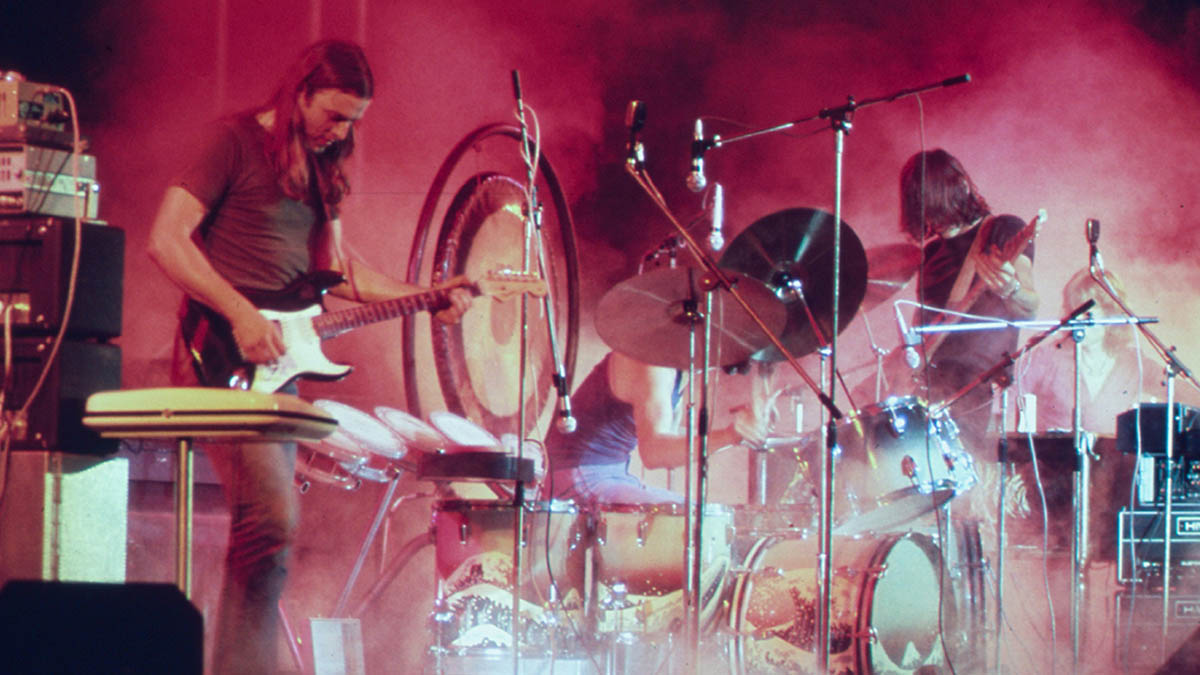
It’s tempting to think that there’s very little more that can be said about Pink Floyd’s 1973 masterpiece, The Dark Side Of The Moon, which celebrates its 50th anniversary this year.
In fact, none of the remaining members of the band are prepared to talk about it, with the exception of Roger Waters, who has apparently re-recorded the entire album, according to interviews he has done in support of his forthcoming This Is Not A Drill European tour. And no, thus far we haven’t heard it.
Historically, Floyd had been heading towards more long-form pieces before the songwriting for Dark Side had even begun. Both the 23-minute-long Atom Heart Mother suite (from the 1970 album of the same name) and Echoes – which was around the same length – from the Meddle album had got the band thinking. So when the writing sessions began in the winter of 1971 at a rehearsal studio in Broadhurst Gardens, London, the first few songs began to emerge.
A few tracks were recycled from previous projects, including Breathe (In The Air), which was inspired by an idea that Roger Waters had for the Ron Geesin album Music From The Body (the soundtrack to the documentary The Body, 1970) and Us And Them – originally titled The Violent Sequence – was from the Antonioni film Zabriskie Point (1970). To begin with, the songs were standalone, but when the idea to segue them came about, the project began to crystallise.
Live rehearsals began in January 1972 and the piece as a whole received its first live performance later that month in Brighton.
Initially, the suite of songs had the working title Eclipse, the band changing the title to The Dark Side Of The Moon soon afterwards. Conceived as an audio-visual extravaganza, the album was to evolve through live performance before the band checked in at Abbey Road for the first recording sessions in June 1972.
Live & Kicking
But what about those live performances? Have we been listening to the album in the wrong context for the past 50 years? Maybe we should begin to consider it as a live performance suite first and foremost that was decanted into the recording realm like the soundtrack to a movie.
Get The Pick Newsletter
All the latest guitar news, interviews, lessons, reviews, deals and more, direct to your inbox!
There have been two main periods where the album was recreated on the live stage in full: the early ’70s, both before and after its release, and the surprise rebirth in 1994 during Floyd’s The Division Bell tour, a full live reading appearing on the album Pulse (1995) and subsequent live video set of the same title released the same year.
“It was just one of those ideas that gradually fermented in our minds,” Gilmour told Guitarist at the time. “We realised that we were actually doing two thirds of [the album] and thought it would be really good fun to do it as a whole. Gradually, it got to the point where we could do the whole thing when we got to Detroit, towards the end of the American part of the tour.
“We wouldn’t have done a live album or released a live video if we hadn’t been doing Dark Side Of The Moon at that stage,” he continued. “At one point we nearly put out just The Dark Side Of The Moon, but then it was too short so we thought we might as well give [people] the whole lot again, and fought and fought with the record company to keep the price down to a nice reasonable price for a double-CD.”
In the 20 years that separated those two outings, Gilmour’s gear changed radically. Looking back to the dawn of the 1970s when the initial compositional steps towards what would become Dark Side were being made by the band, while Hiwatt AP100 amps and WEM cabs had taken up residence by Gilmour’s side, effects units back then (while perhaps not in their infancy) definitely hadn’t quite made it out of kindergarten. But more of the sauces and spices used to perform Dark Side live later on. Firstly, we’ll look at the main dish: Gilmour’s famous black Strat.
The Black Strat
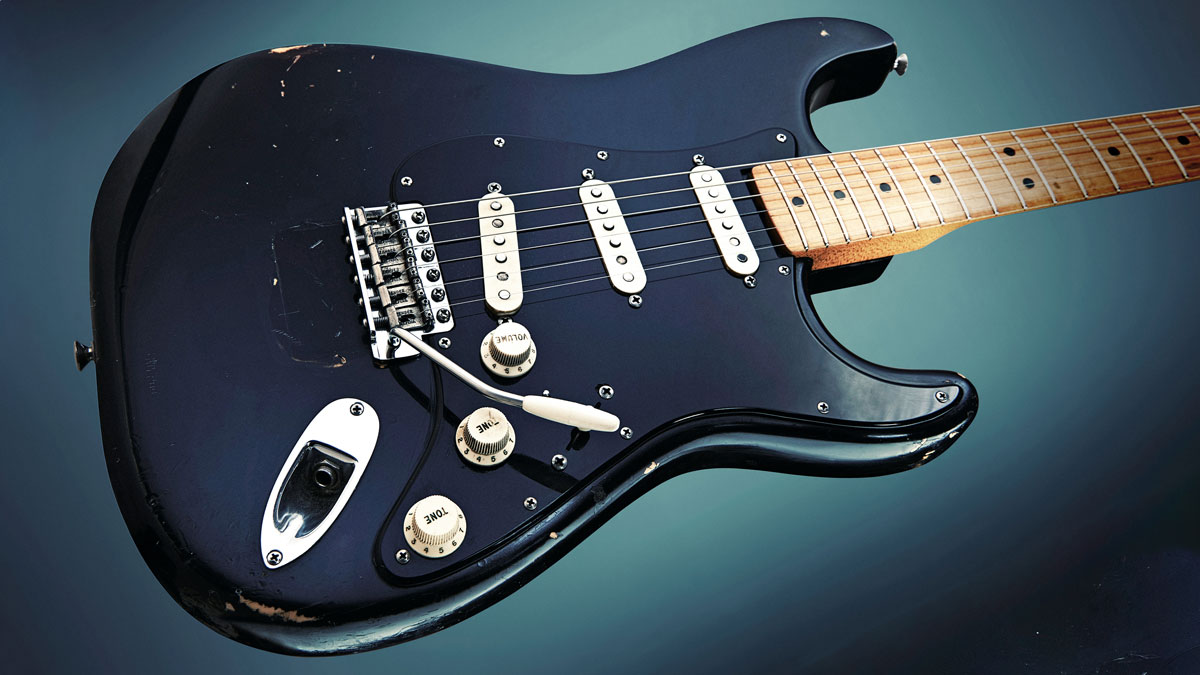
“I bought it at Manny’s in New York,” Gilmour told us in 2006. “I’ve always used it as a testing ground for trying all sorts of things out. It’s had a few different necks on and it has different pickups.
“Years ago, I met up with Seymour Duncan and we picked three really nice-sounding pickups he had. We rewound those three and they’ve stayed on it ever since. But I’ve always considered that to be my bodge-up guitar that nothing is sacred on. I’ve had holes drilled in it. It’s still a good guitar.”
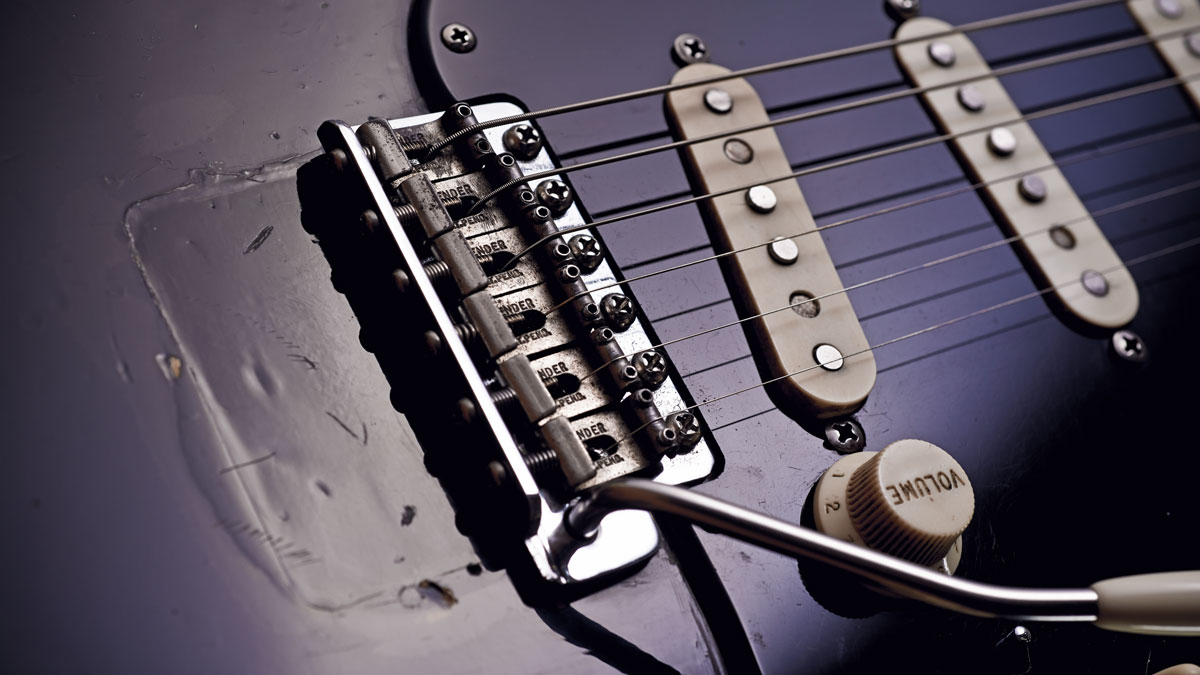
As DG states above, the black Strat was originally purchased in May 1970 from Manny’s on West 48th Street, New York, to replace two Strats that were stolen while the band was on a US tour. It was to go on to lead a fabled existence in Pink Floyd’s touring career, accompanying Gilmour pretty much continuously until 1986 when it spent a 10-year period in captivity in the Hard Rock Cafe, Dallas, Texas. It was subsequently retrieved and went on to serve Gilmour’s Floyd and solo activities until it was sold at auction in 2019 for a record $3,975,000.
It endured many experimental changes over the years – different necks, pickups, controls, vibratos – all of which are exhaustively chronicled in the book The Black Strat by Gilmour’s personal guitar technician, studio manager and Floyd’s chief backline technician, Phil Taylor.
Briefly, on purchase, the guitar was a standard 1969 black Strat with a post-CBS large headstock and maple fretboard. By the time the band had started playing tracks from Dark Side live, under the working title Eclipse: (A Piece For Assorted Lunatics), the neck had been replaced with a rosewood-’boarded version from a 1963 Sunburst Strat. Other changes were forthcoming and if the minutiae of its various transformations is something you find fascinating, let Phil Taylor’s book be your guide.
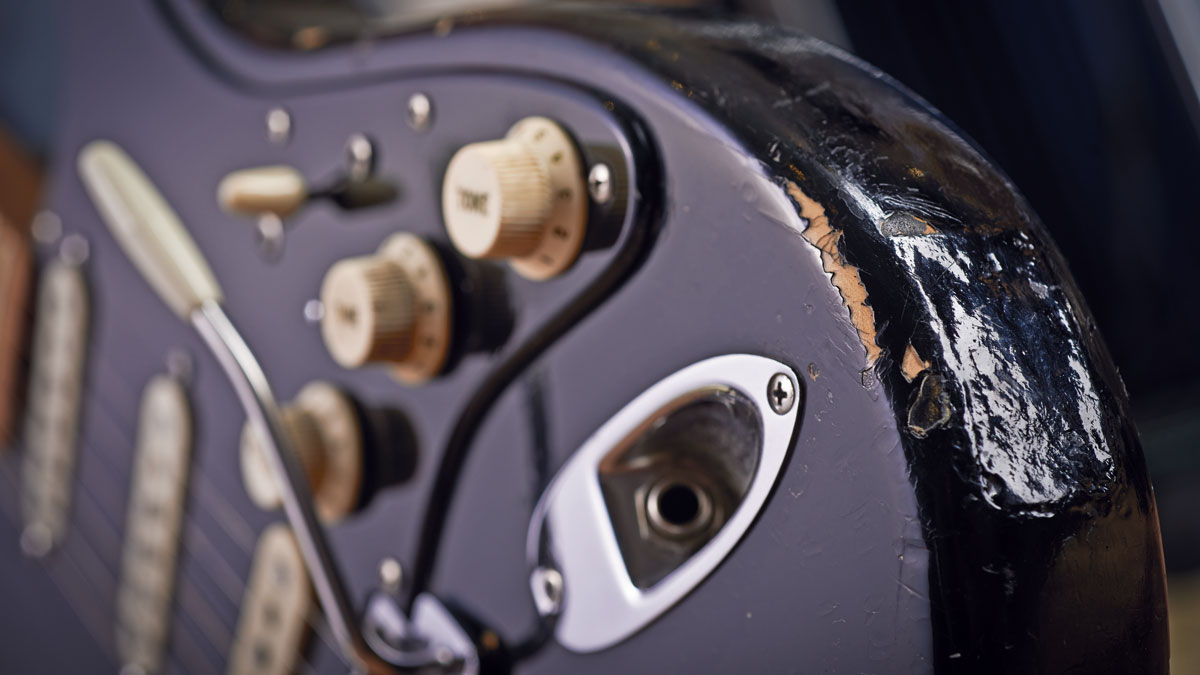
Two other guitars came into focus for the Dark Side live shows: a second black Strat from 1972 with three-bolt neck and bullet-head truss rod, which was primarily used as a backup instrument, and a guitar made by a Canadian maker Bill Lewis that Gilmour bought during the band’s Atom Heart Mother tour in 1970.
The Lewis had a mahogany body with an ebony fretboard and hand-wound humbucking pickups. The key factor for Dark Side was that the Lewis had a two-octave neck, and the guitar can be heard on parts of the Meddle album but features on the solo to Money and, according to the Classic Albums’ Making Of The Dark Side Of The Moon DVD and studio footage from the Pink Floyd Live At Pompeii DVD, on Us And Them, too.
Effects-wise, things were necessarily quite simple and straightforward. This was long before pedalboards were a thing and daisy-chained floor units still reigned supreme, even among rock’s glitterati. Around the time of early live performances of Dark Side, Gilmour’s mainstay effects comprised a Binson (tape) echo, a Fuzz Face, a Colorsound Power Boost, a Vox wah pedal, a Uni-Vibe and a DeArmond 610 volume/tone pedal.
He also used a state-of-the-art EMS VCS3 synthesizer, which would be called into action on the track On The Run when the band convened at Abbey Road Studio Three for the Dark Side album sessions in June 1972.
On its completion, did the band members have any inkling that they were about to release an album that would shock the music world with its impact and influence for decades to come? “An impossible question to answer!” Gilmour laughs. “We knew it was good, probably the best we had ever done as we were making it. But no, you can’t possibly know that it’s going to reach the sort of significance that it has.”
Records show that the last full performance of The Dark Side Of The Moon during the 1970s was at the Knebworth Festival in 1975, but when the album’s signature heartbeat boomed out of the PA during the 1994 Division Bell US tour, fans were delighted to witness its revival.
We knew it was good, probably the best we had ever done as we were making it. But no, you can’t possibly know that it’s going to reach the sort of significance that it has
David Gilmour
“Well, in America it was received with stunned, shocked silence quite often,” Gilmour remembers. “I think by the time we got going in Europe, through the fanbase and the internet and all that sort of stuff, people were aware that this was a possibility so it was maybe less of a surprise. So that would bolster them up a bit and they’d start cheering quicker and earlier at the beginning, as soon as the heartbeats and stuff started.
“On the Momentary Lapse Of Reason tour we’d done On The Run, and we’d done Money, Us And Them and Time, so there was not that much more to rehearse, just Breathe, Any Colour You Like, Brain Damage and Eclipse. We’ve never really thought that much of doing Brain Damage and Eclipse before because those were the two songs on Dark Side that Roger actually sang. I thought I might feel a little uncomfortable singing them, but it was fine.
“Lyrically, Dark Side Of The Moon is really Roger’s baby. So sometimes I’d get a slight feeling of minor discomfort doing it without him. But not sufficient to make me think we shouldn’t do it. It’s part of our oeuvre. I spent a lot of time and sweated blood making that record, and doing it again live was always my ambition.”
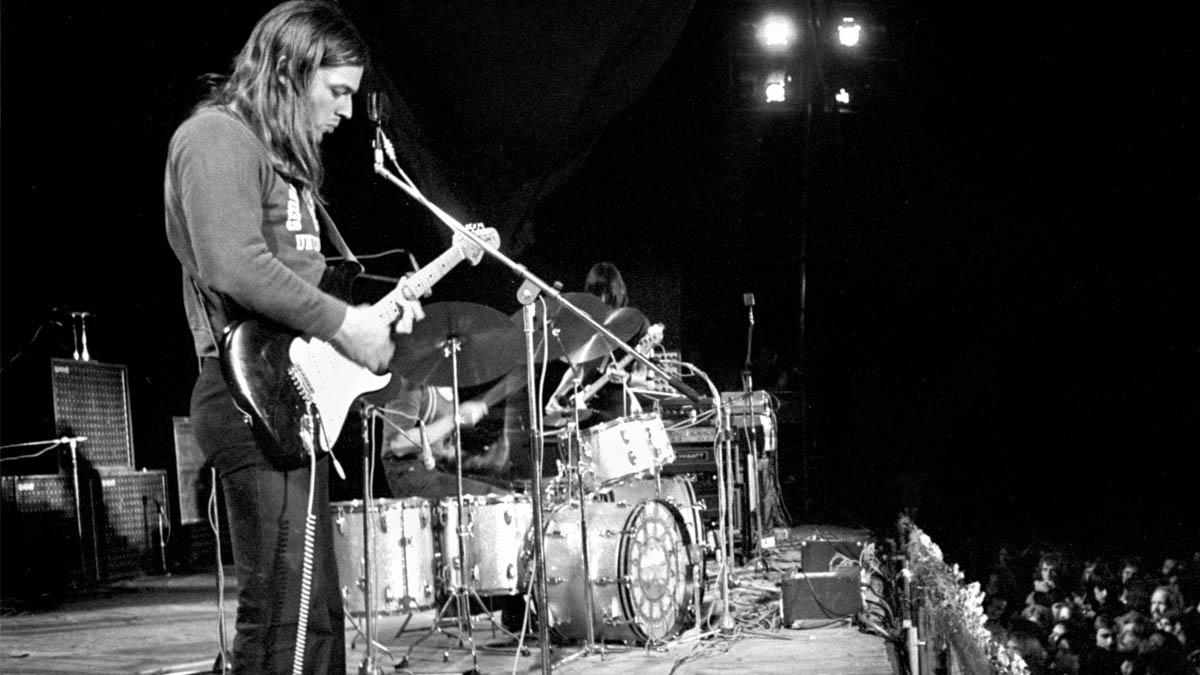
Side Effects
In the years since the album was performed live in the ’70s, gear had become more sophisticated, as had the light show that accompanied the performance. With the black Strat away on display in Texas, Gilmour’s substitute guitar for the ’94 reading of Dark Side was a USA ’57 Vintage Reissue Strat fitted with EMG-SA pickups with the EMG-EXG expander and SPC midrange presence control.
Said Gilmour: “For many years one of the problems of touring was [RF] interference – especially if, like me, you’re the sort of bastard who tends to use a huge pedalboard. Those effects pedals really tended to pick up interference, as did the dimmers on the lighting rigs. And with Pink Floyd we did have extensive lighting rigs, which buzzed horribly.
“But when I first heard of and got hold of those EMG pickups, they stopped that dead. They sounded great – a very full and rich tone – but they didn’t sound quite as ‘Stratty’ in some ways.”
With Gilmour’s ’94 rack system we meet a marriage of technologies, old and new. He had always exhibited a preference for older, analogue effects, but here he had effects guru Pete Cornish create a switching system that guaranteed ease of use with optimum low-noise performance. The ’board at Gilmour’s feet switched through the combinations of effects used in the various songs and a window at the top displayed the title of each track.
After journeying through the rack system, the guitar signal met an Alembic F-2B bass guitar preamp, which had been modified to suit, and then on to the Hiwatt guitar amps, which themselves had enjoyed something of a makeover since the early Floyd days.
Still a great fan of AP100s, three of the heads were used as power amps and another three used as secondaries. One AP100 powered a WEM 4x12 loaded with Fane Crescendo speakers and a Marshall cab with Celestions. A second Hiwatt did the same thing but carried a chorused version of the signal. The third amp was a spare.
In the second rack, one AP100 powered a Jim Dunlop Heil voice box (not used for Dark Side) and another fed the Doppolas – custom-designed rotating speakers, Leslie-like in use but more robust and road-proof.
Leslie cabinets themselves might have seemed the obvious first choice, but Gilmour was after a slightly different sound. In the studio, he had been using Maestro Rover units, which are revolving full-range speakers, but they were too low-powered for live use and so the Doppolas were born. Three units were used on stage, each loaded with two six-inch 100 watt drivers.
Looking back on the album, Gilmour says: “My problem with Dark Side, and I’ve said it before and I’ll no doubt say it again, was that I thought that Roger’s emergence on that album as a great lyric writer was such that he came to overshadow the music in places, and there were moments when we didn’t concentrate as hard on the music side of it as we should have done – which is what I voiced to all the band after the making of Dark Side. That was absorbed into an effort to try to make the balance between music and the words a better one on Wish You Were Here.”
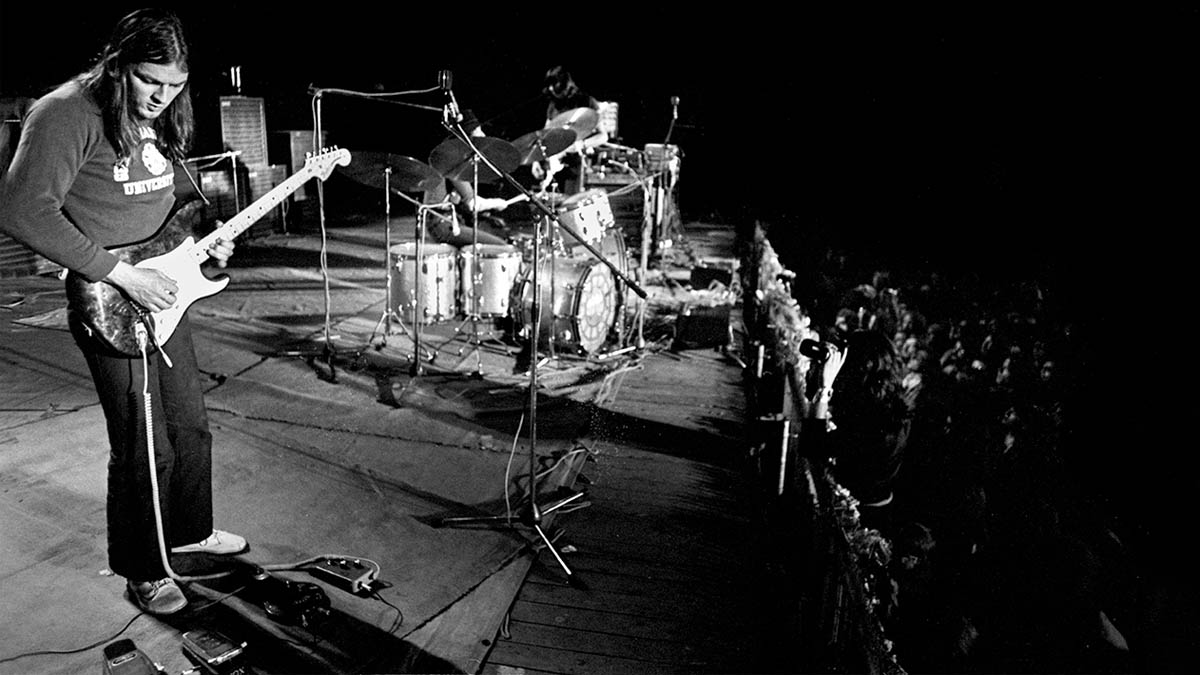
Time Travel
As it reaches its 50th anniversary, the legacy of Dark Side is clear. It’s still one of the biggest-selling rock albums of all time and spent a record 741 weeks in the charts between 1973 and 1988. Celebrity fans include Steve Hackett: “I really like Us And Them for various reasons. It has a somnambulist aspect, the production with the repeat echo on the vocal is superb. It’s also got a disaffected element.”
Contemporary prog superstar Steven Wilson told us that having grown up drinking in the album, he doesn’t actually have to listen any more as it’s embedded in his memory, as, perhaps, is evidenced by the first guitar note on his song To The Bone, which tips its hat to the intro to Floyd’s Time.
As for Gilmour’s influence as a guitarist, we’ll leave the final words to the man himself who, in summing up his style, told us: “The way I play melodies is connected to things like Hank Marvin and The Shadows – that style of guitar playing where people can recognise a melody with some beef to it.”
- The Dark Side of the Moon (50th Anniversary Deluxe Remaster) is out now via Pink Floyd Records.
With over 30 years’ experience writing for guitar magazines, including at one time occupying the role of editor for Guitarist and Guitar Techniques, David is also the best-selling author of a number of guitar books for Sanctuary Publishing, Music Sales, Mel Bay and Hal Leonard. As a player he has performed with blues sax legend Dick Heckstall-Smith, played rock ’n’ roll in Marty Wilde’s band, duetted with Martin Taylor and taken part in charity gigs backing Gary Moore, Bernie Marsden and Robbie McIntosh, among others. An avid composer of acoustic guitar instrumentals, he has released two acclaimed albums, Nocturnal and Arboretum.





![A black-and-white action shot of Sergeant Thunderhoof perform live: [from left] Mark Sayer, Dan Flitcroft, Jim Camp and Josh Gallop](https://cdn.mos.cms.futurecdn.net/am3UhJbsxAE239XRRZ8zC8.jpg)








